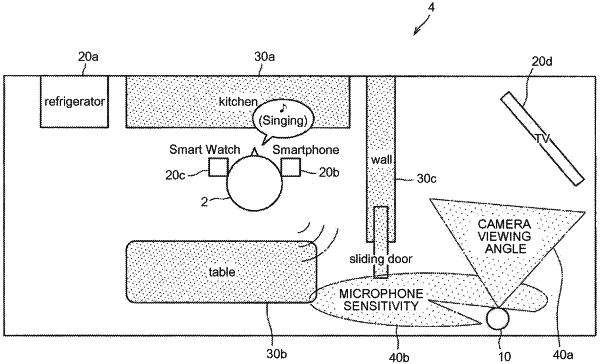| CPC G10L 15/22 (2013.01) [G10L 13/00 (2013.01); G10L 13/033 (2013.01); G10L 25/78 (2013.01); G10L 2015/223 (2013.01)] | 18 Claims |

|
1. An information processing apparatus, comprising:
one or more sensors having a sensing range and configured to acquire first sensing results related to a user based on a presence of the user within the sensing range;
one or more processors configured to:
transmit a sensing result provision request to a plurality of devices that are located in a predetermined space, in response to the user being outside the sensing range of the one or more sensors, to acquire a plurality of second sensing results related to the user;
receive, from the plurality of devices, the plurality of second sensing results based on the sensing result provision request;
select, based on a predetermined reference, one or more third sensing results from among the received plurality of second sensing results, wherein the predetermined reference is a combination of a plurality of types of references, and wherein the one or more third sensing results are selected based on the combination of the plurality of the types of references and a priority level associated with each of the plurality of the types of references;
estimate, based on the predetermined reference and the one or more third sensing results, a user state as one of a plurality of predetermined states, wherein the plurality of predetermined states includes a state to emphasize notification information, a state to deliver the notification information after a predetermined time, and a state to deliver the notification information in a normal configuration to the user; and
control an output of the notification information based on the estimated user state.
|